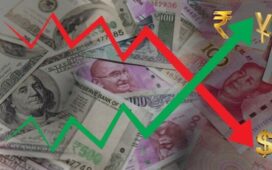Golden candles moving up to indicate price growth
getty
Assets need use cases. Those that capture the imagination but lack practical utility rarely retain long-term value.
Gold does have use cases. It was once the go-to for flight capital and dentistry, though those roles have diminished. Today, gold still matters in electronics and in trinkets. People value it for historic and aesthetic reasons, but at $100 million per tonne, sentiment alone isn’t enough to sustain its price. It also serves as an inflation hedge, though that’s partially offset by advancing technology that enables cheaper extraction.
I look at gold from a long term, structural perspective. Copper is for small change. Silver is for everyday transactions. Gold is for large-scale purchases. At the top of the monetary food chain, gold operates as an intergovernmental currency – and most importantly, as the currency of war. Paper promises don’t hold up in existential conflict. In times of rising tension, governments need more gold in their vaults. In its simplest form, gold is a strategic necessity.
Here we are, with global tension rising. And so, with gold on a steep upward trajectory:
The gold chart is on a steep upward trajectory
Credit: ADVFN
The following chart reflects my thinking, based on these axioms:
- Tension is going to increase dramatically—even from current levels. Just listen to the U.S. administration. What are they saying? They’re openly preparing for confrontation with China. That alone is deeply concerning.
- China is stockpiling gold. No surprise there. Poland purchased 29+ tonnes in February alone. Turkey, the Czech Republic, and India are buying similar amounts. The theme of tension is clear.
My thinking about the gold trajectory
Credit: ADVFN
So while many will talk about de-dollarization, a treasury bond collapse, runaway inflation – all the usual tropes – those aren’t necessary for gold to surge. But if any of them do come into play, the spike in gold prices could be monumental.
Now, let’s consider the downside. And what is it?
For gold to truly drop, global calm would need to break out. That feels like a low-probability scenario to me.
However, let’s look to the downside. And it is…?
For gold to truly drop, global calm would need to break out. That feels like a low-probability scenario to me.
In this new reality of geopolitical outbursts, who’s going to take global dialogue off the Adderall and onto the Prozac?
Some may ask: What just happened?
The current gold chart – what’s going on?
Credit: ADVFN
All markets are interconnected by long-standing arbitrage. When liquidity rushes for the exits, those relationships pull valuations around violently. A bifurcation and reset often follow. The ongoing tariff slump ruptured many such trades, and now capital is being reallocated – some of it clearly flowing into gold. Perhaps something wicked this way comes. But gold doesn’t need an acute disaster to rise. In fact, the opposite is true: it’s the chronic rise of global tension that fuels its ascent. And for that driver, there is no reversal in sight.
And yes, I hold gold – quite a bit of it. But no, I’m no long-term gold fanboy. I’d much rather make money in equities in a calm, stable world.
Unfortunately, that option doesn’t seem to be on the table right now.
Disclaimer: I hold gold.





